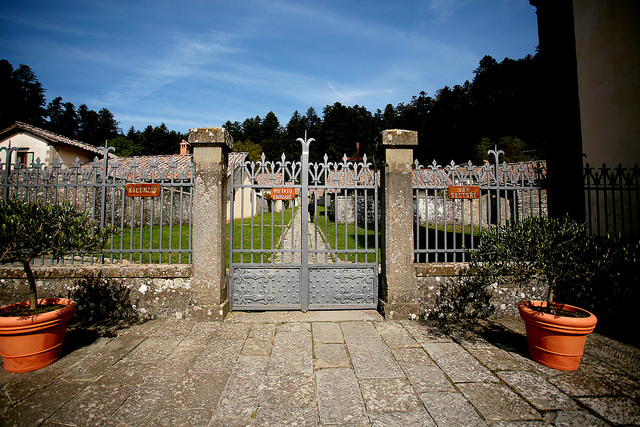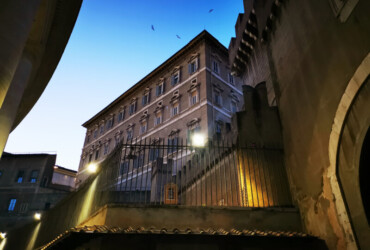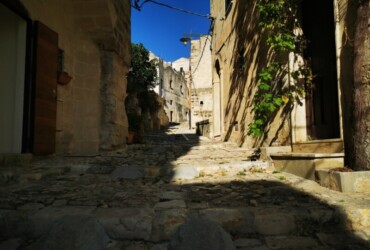The Camaldoli Hermitage is a magical place
Located near Camaldoli (obviously), in the province of Arezzo, it is located almost at the administrative border between the area of Arezzo and that of Forlì-Cesena. The visit started from the courtyard, where the guide gave us a first smattering of the place. San Romualdo arrived in this area around 1012 and founded this hermitage, the mother house of the Benedictine Congregation of the Camaldolese, in about 1023. The first nucleus of the retreat revolved around 5 cells and a small oratory dedicated to San Salvatore Trasfigurato; the cells then became 15 (the monks who live here are, today, 9) and the monastic community of the area currently lives around the hermitage and the monastery (not far from the retreat itself). Obviously, it is not possible to visit the cells where the monks sleep today, but you can see them from behind the gate that separates them from the rest of the buildings that are part of the complex.
The Church
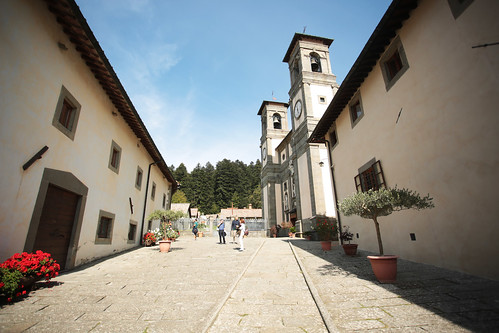 The building of the original one was destroyed by fire in 1693, so what you see today is a reconstruction, in Neapolitan rococcò style decidedly very different from the original in a Romanesque and Spartan style. The interior is richly decorated with frescoes and gold trim (certainly not much reflects the typical simplicity of monastic life). Inside you can admire the altarpiece attributed to Bronzino and the glazed ceramic work by Andrea Della Robbia.
The building of the original one was destroyed by fire in 1693, so what you see today is a reconstruction, in Neapolitan rococcò style decidedly very different from the original in a Romanesque and Spartan style. The interior is richly decorated with frescoes and gold trim (certainly not much reflects the typical simplicity of monastic life). Inside you can admire the altarpiece attributed to Bronzino and the glazed ceramic work by Andrea Della Robbia.
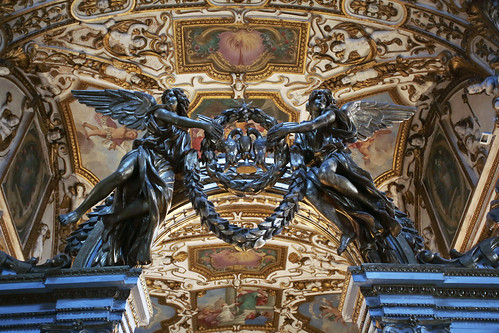
The cell of San Romualdo
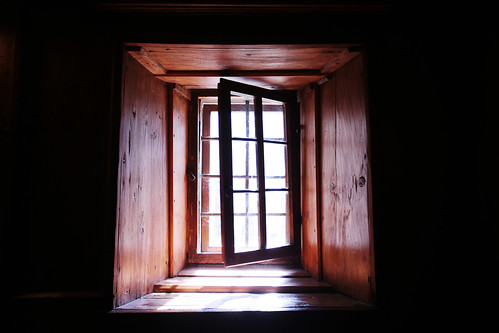 Today incorporated into the library building, it is the other highlight piece of the hermitage (as the founder’s cell). The interior shows the “basic” structure of the hermit’s cells: the corridor unfolds on three sides, leading visitors to discover the bedroom, the study and the chapel. I discovered, studying before the visit and thanks to the guided tour, that the structure is called “spiral” and that served for two reasons: to offer shelter from the harsh winter temperatures and symbolises the inner journey of the monk who tries to enter himself. This is the only cell in the complex that you can visit if you are curious you can, however, imagine them because they are built practically in the same way.
Today incorporated into the library building, it is the other highlight piece of the hermitage (as the founder’s cell). The interior shows the “basic” structure of the hermit’s cells: the corridor unfolds on three sides, leading visitors to discover the bedroom, the study and the chapel. I discovered, studying before the visit and thanks to the guided tour, that the structure is called “spiral” and that served for two reasons: to offer shelter from the harsh winter temperatures and symbolises the inner journey of the monk who tries to enter himself. This is the only cell in the complex that you can visit if you are curious you can, however, imagine them because they are built practically in the same way.
Other buildings of the complex
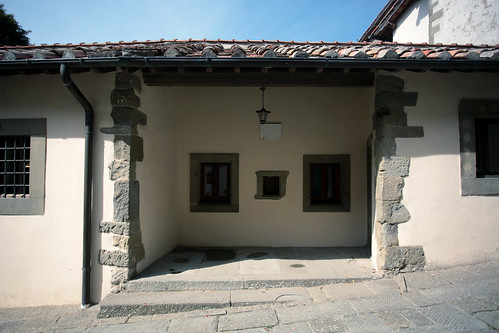
The Refectory
It is located in the building next to the church. It was built in 1679 by the masters Guglielmo Magistretti of Arezzo and Baldassarre da Stia (the original building has kept only the façade). The ceiling is “decorated” with rosettes different from each other, made by the Florentine carvers Evangelista Dieciaiuti and Gaspare Bertacchi. The works hung on the walls, depicting two saints each, are of Caravaggesque inspiration and seem to be from the Camaldolese monk Venanzio l’Eremita. At the end of September, it was unfortunately closed for restoration.
The library
We know that the library building already existed in the eleventh century and in 1510 there were preserved thousands of parchments. The current environment was built in 1622. With the (second) Napoleonic suppression of 1866, it was “emptied” and the works that were kept there were divided between the National Library of Florence, the Laurentian Library, the Civic Library of Arezzo and the “Rottiana Library” of Poppi; The archival material, however, was transferred to the State Archives of Florence. Currently, the deposit of books is slowly being rebuilt, including over 500 texts. If I remember correctly, you can not visit it.
Pharmacy
Outside the complex, there are many things like the honey of various types, creams (spreads), face/ body/hands creams, books, soaps and many other things. Certainly not cheap, I took honey and milk of chestnuts (both delicious, self-control was essential not to finish both jars in one afternoon).
Other useful information for the visit
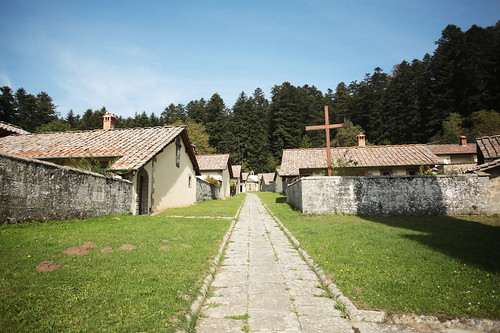
The hermitage can be visited free of charge (a donation of 1 euro is requested, but you’re not obliged to leave), thanks to guided tours that go every half hour from 10 am to 5:30 pm. The permanence of each group is 20 minutes, maximum 30. The trip always takes place with the guide who also takes care to keep an eye on the duration of the tour, to ensure that everything happens within the time frame for each group visit. For all further information, I refer you, of course, to the official site.

